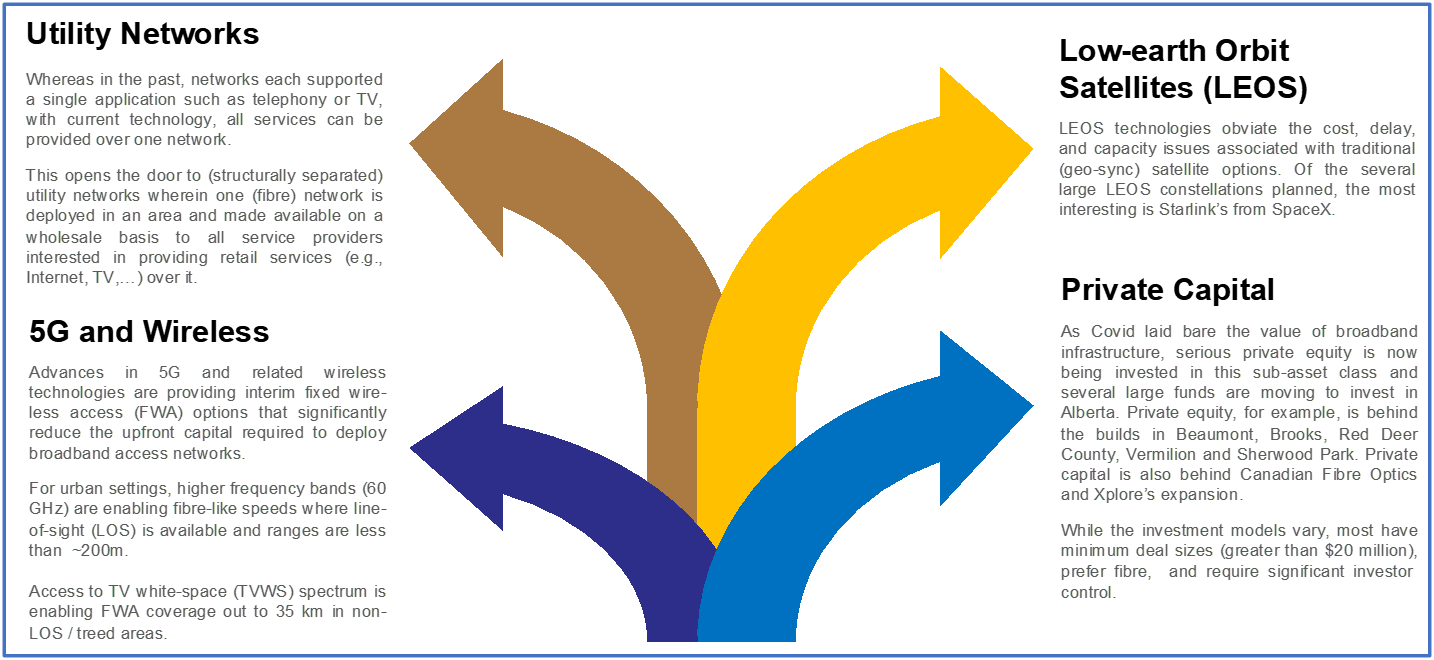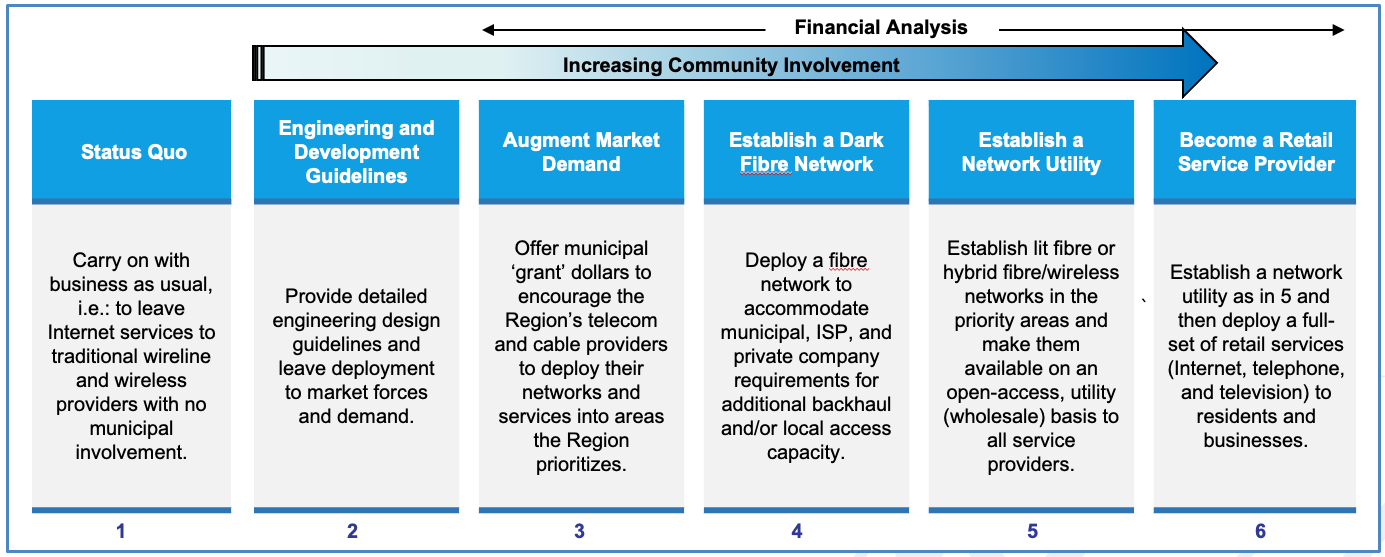BROADBAND PLANNING & STRATEGY:
NEEDS ASSESSMENT AND STRATEGY DEVELOPMENT
NEEDS ASSESSMENT AND STRATEGY DEVELOPMENT
Broadband networks rank among the most important infrastructure assets of our time — for purposes of economic development and competitiveness, innovation, workforce preparedness, healthcare, education, democratic discourse, and environmental sustainability. — CTC.

Key to developing a strategic plan is an in-depth understanding of the landscape within which the strategy will be developed and executed. In the broadband arena, the unprecedented level of grant funding, innovation and disruption in recent years has created many more options and opportunities for municipalities to consider.

TaylorWarwick can help guide regional economic development associations, developers, communities, and local governments through the deceptively simple traditional strategy development process shown below: (1) determine where things stand and the assets that can be drawn upon, (2) determine the requirements that need to be met, and then (3) determine and evaluate the options and strategies available to move from the current to the desired state and satisfy those requirements.

Phase 1: Current State
 As many telecom providers and private equity firms deem their network reach and capabilities competitive and confidential, developing a reasonably exhaustive and accurate current state requires a neutral and trusted third party which can collect and aggregate the required data and plans and provide an accurate view of the market, the competitive landscape, and the potential partnerships available to communities. Supplementing provider data and plans with client speed test data is often enlightening and always helpful. Developing an inventory of all planned linear civil works in the area so that the work can be leveraged where possible to reduce deployment costs is also worthwhile.
As many telecom providers and private equity firms deem their network reach and capabilities competitive and confidential, developing a reasonably exhaustive and accurate current state requires a neutral and trusted third party which can collect and aggregate the required data and plans and provide an accurate view of the market, the competitive landscape, and the potential partnerships available to communities. Supplementing provider data and plans with client speed test data is often enlightening and always helpful. Developing an inventory of all planned linear civil works in the area so that the work can be leveraged where possible to reduce deployment costs is also worthwhile.
Phase 2: Desired State
Phase 3: Strategy
Whereas identifying the gaps between the current and desired target environments is straight-forward, charting the strategic options available to best close those gaps and then working with stakeholders to determine which best meets the needs of the target area as a whole is a much more interesting undertaking. There are usually a number of alternate routes to meet and exceed the requirements identified and working through these prior to developing an associated business case will both ensure strong alignment with the community's vision and reduce the options that need to be evaluated. In general, municipalities have six options with which they can enhance broadband services in their area.

Options 3, 4, 5, and 6 can be accomplished by establishing partnerships with capable private providers. These can range from simple outsourcing relationships to highly structured public private partnerships.
The good news is that we will work through these options with you and, whether in-house, partnership, or contract options are selected, TaylorWarwick will provide the necessary guidance to ensure network and service deployment is completed and operations are established in an integrated, sustainable, and non-burdensome manner.